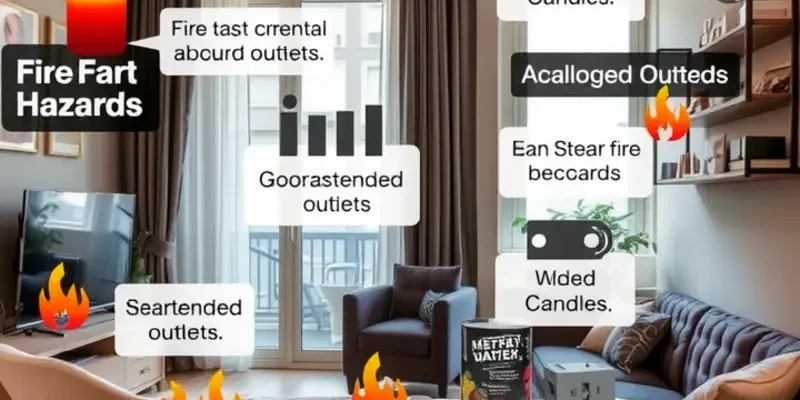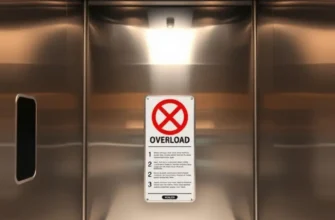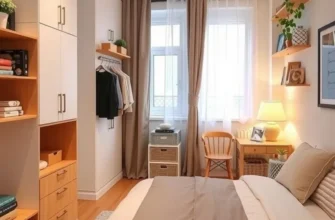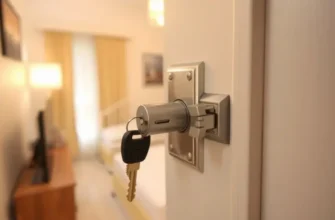Apartment living brings unique joys and challenges, not least of which is the need to prioritize safety in environments where space is often shared. Fire safety is a vital yet often overlooked aspect that every renter should actively consider. With the right knowledge and simple DIY strategies, you can enhance your apartment’s security without the need for extensive renovations or landlord approvals. This guide provides practical steps renters can implement to protect themselves and their belongings from fire risks. By understanding potential hazards and taking proactive measures, you can create a safer living space—ensuring peace of mind for you and your loved ones. Whether it’s checking smoke detectors or devising a clear evacuation plan, the path to improved fire safety begins with awareness and action. Let’s explore some essential DIY fire safety tips tailored specifically for renters across the U.S.
Fire Hazards in Small Spaces: Identifying Risks
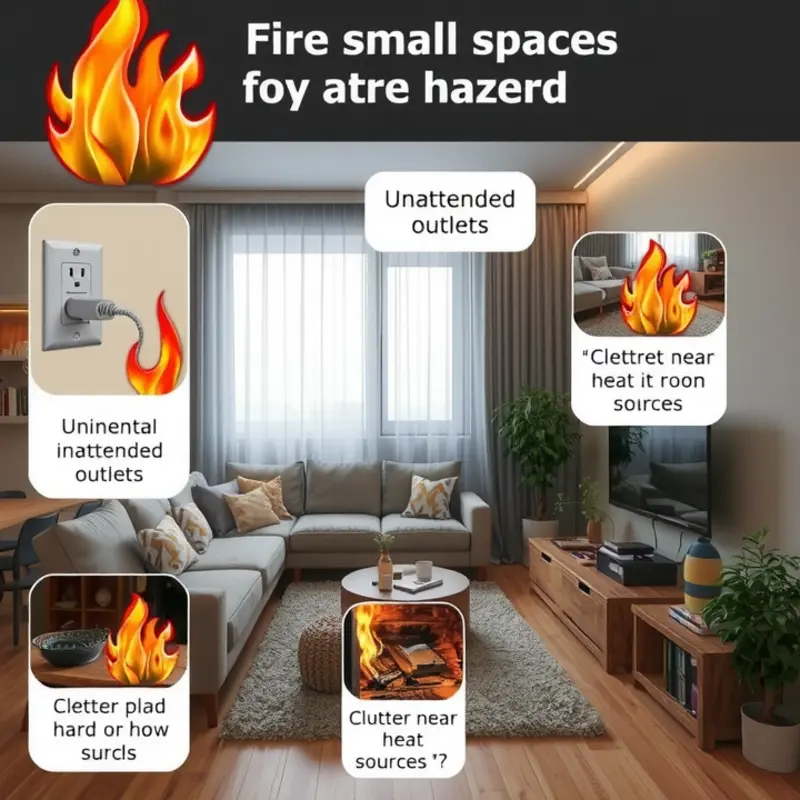
Living in an apartment presents unique fire hazards that renters should be aware of. The cozy and often compact nature of apartments can transform mundane items and behaviors into potentially dangerous situations. Understanding these risks is crucial for prevention.
Firstly, pay attention to the kitchen, often considered the heart of a home but also the primary source of fires. In small kitchens, clutter can easily accumulate. Stacks of mail, paper towels, and even decorative items near the stove can catch fire from open flames or heat. Ensure your stovetop and any flammable items are kept separate and be vigilant about turning off appliances when not in use.
Electrical systems, while pivotal in any home, also present unseen hazards. Many rental units have outdated wiring, unable to support modern electronics’ demands. Be cautious not to overload outlets with multiple adapters or to use extension cords as permanent solutions. Look for signs of electrical issues, such as flickering lights or the smell of burning, and report them to your landlord promptly.
Additionally, examine your apartment’s heating sources. Portable heaters are convenient but can quickly become hazardous, especially if they’re too close to fabrics like curtains or furniture. Always keep at least a three-foot clearance around heaters and never leave them unattended. It’s also advisable to inspect your heating equipment regularly for frayed wires or faulty switches.
Another often-overlooked area involves smoking habits. Whether you smoke or have guests who do, it’s important to ensure that cigarettes are extinguished properly. Consider smoking outside or using dedicated ashtrays with water to prevent ashes from igniting your trash bin.
Candles, while creating ambiance, can easily lead to fires if not monitored. Always place candles on stable surfaces and use holders designed to catch melted wax. Opt for LED candles if you enjoy the glow without the risk.
The presence of pets can introduce unexpected hazards. Animals might knock over candles or dislodge electrical leads. Consider pet-proofing your home by securing wires and placing all flammables out of reach. Engage in regular apartment wellness checks to ensure your living space is safe for all inhabitants.
Finally, make a habit of checking smoke alarms and carbon monoxide detectors. These devices are lifesavers, but only if they’re functional. Test them monthly and change batteries every six months.
By staying informed and vigilant, renters can prevent small fire hazards from escalating. Awareness coupled with proactive measures is key to maintaining a safe living environment.
Empower Yourself: DIY Fire Safety Measures
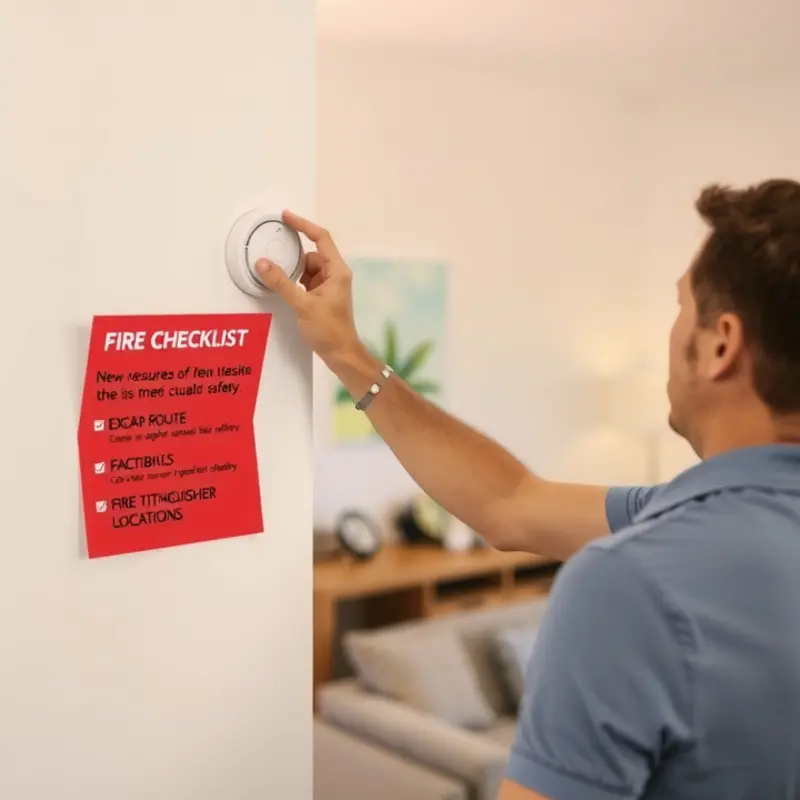
Ensuring fire safety in your apartment is crucial, and as a renter, you can take practical steps to protect your home without breaking the bank. Smoke alarms are your first line of defense. It’s essential to check if your apartment already has them installed. If not, consider talking to your landlord about installing them. For personal reinforcement, you can purchase easy-to-mount battery-operated smoke detectors. Place them in key areas such as the kitchen, bedrooms, and hallways. Remember to test them monthly and replace the batteries every six months.
Creating an effective fire exit plan is another vital step. Ensure you and your fellow occupants understand the quickest escape route from every room. Practice this plan regularly to reinforce the muscle memory needed in an emergency. Consider using glow-in-the-dark signs to mark the exit path if power fails during a fire.
Using fire-resistant materials in your home can significantly reduce fire hazards. Favor curtains, rugs, and upholstery that are made from flame-retardant materials. When arranging furniture, maintain a safe distance from heat sources such as radiators and stovetops.
Regular maintenance and checks play a crucial role in fire safety. Routinely inspect wiring for fraying or damage and report any concerns to your landlord immediately. Also, monitor gas lines and make sure your stove is functioning correctly without leaks. Incorporate these checks into your cleaning routines to ensure they aren’t overlooked.
Actionable daily routines can further enhance safety without adding too much effort. Avoid overloading electrical outlets and use power strips with surge protection. Always unplug appliances when not in use, especially irons, toasters, and heaters. Practicing good apartment organization can also help prevent accidental fires. For ideas on organizing without compromising fire safety, see apartment organization baskets.
When cooking, never leave the stove unattended, as kitchen fires are one of the most common household fire hazards. Keep a fire extinguisher within easy reach in the kitchen and learn how to use it effectively. Additionally, beware of open flames and candles; consider using battery-operated alternatives to eliminate this risk entirely.
Although renters may face limitations compared to homeowners, there remain plenty of proactive measures you can integrate to ensure your living space is safe from fire hazards. By taking these do-it-yourself approaches, you empower yourself to live smarter and safer, reducing the risk of fire-related incidents in your home.
Final words
By being informed and proactive, renters can significantly reduce their risk of fire in their apartments. Identifying potential fire hazards is the first step in creating a safe living environment, followed by implementing effective DIY safety measures. Regular maintenance checks and self-education empower you to take charge of your own safety and that of your loved ones. Remember, a little awareness goes a long way in ensuring peace of mind and security in your home. Take the time today to evaluate your fire readiness; it could make all the difference tomorrow.

